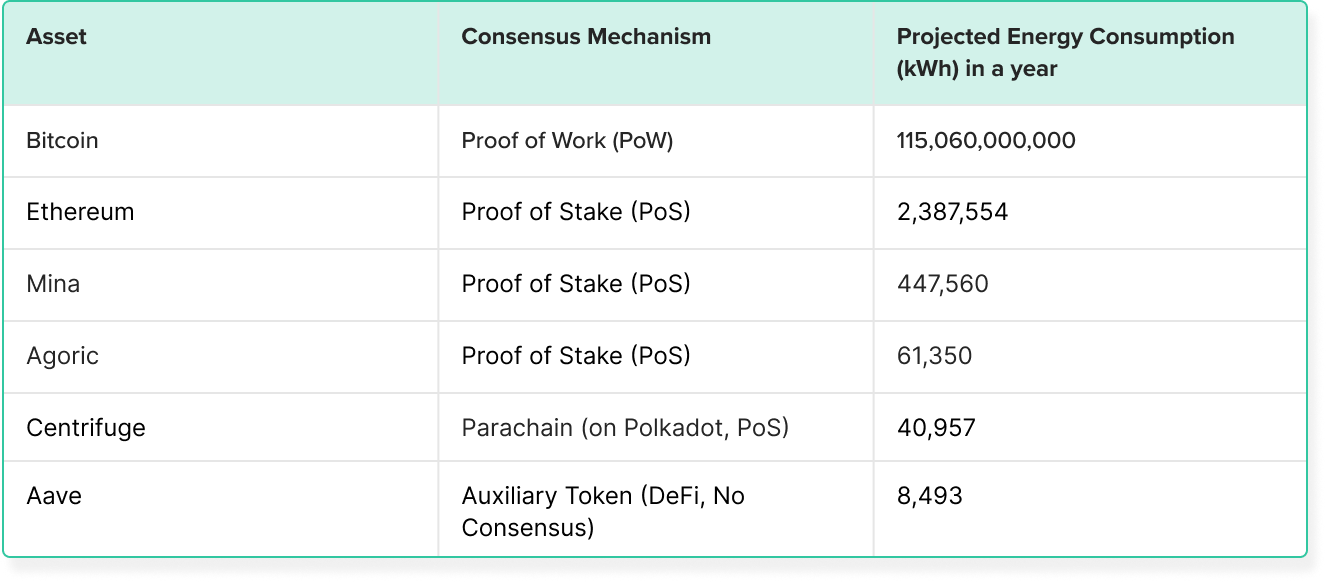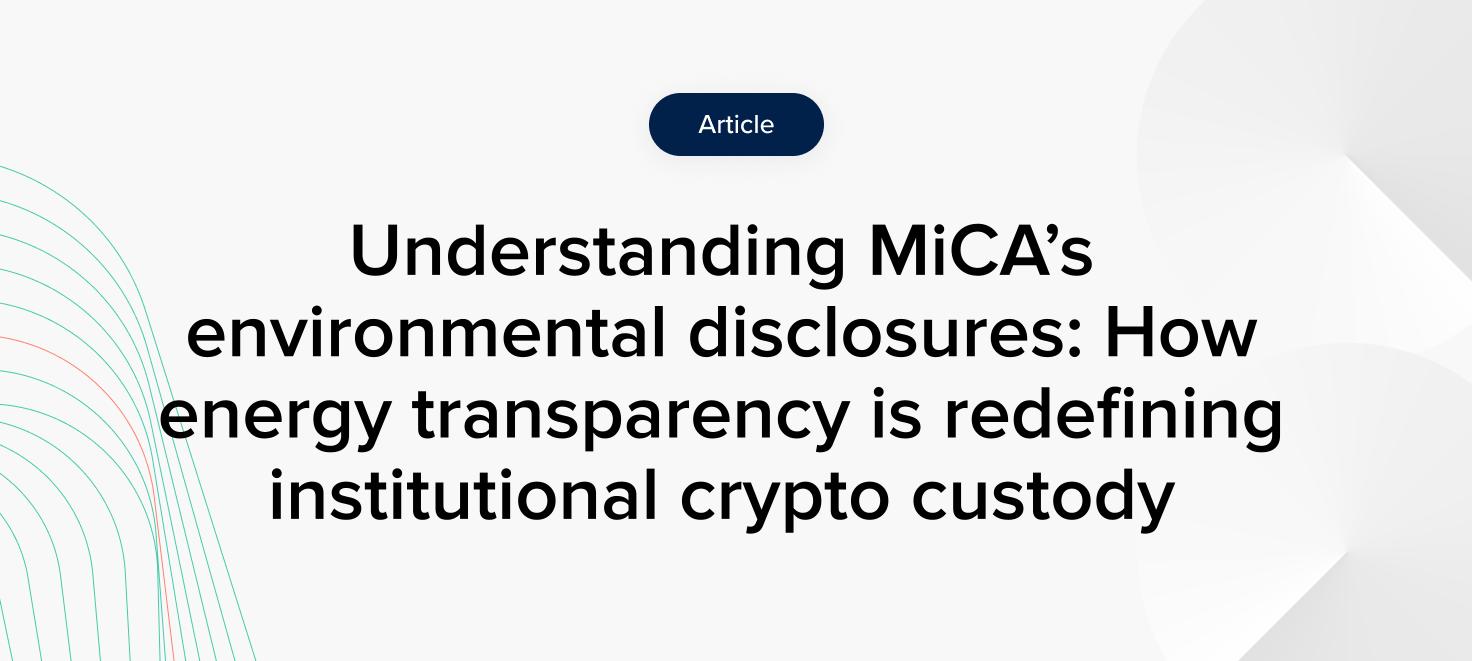How do Bitcoin and Ethereum compare in terms of energy consumption?
It’s a familiar question, but one that now carries regulatory weight. With the introduction of the Markets in Crypto-Assets (MiCA) regulation, the environmental impact of digital assets is no longer just a topic for debate, it’s a matter of compliance. Institutions must now report the energy consumption of the crypto-assets they hold, supported by verifiable data and transparent methodology.
This regulatory shift marks a new era for institutional custodians. Environmental, social, and governance (ESG) considerations are being embedded into operational requirements, and service providers must be ready to support their clients with accurate, auditable information.
MiCA makes environmental transparency a reporting obligation
MiCA (Regulation (EU) 2023/1114) is the first comprehensive framework governing crypto-assets across the European Union. Among its provisions is a requirement for service providers to disclose the “principal adverse impacts” of digital assets,placing environmental performance at the heart of crypto compliance.
Custodians must now disclose:
- The consensus mechanism used by each supported crypto-asset
- The total annual energy consumption, in kilowatt-hours (kWh)
- The methodology and source data used to derive the figures
This level of granularity means that ESG tracking is no longer optional. Custody providers need to offer environmental insight with the same rigor as security and access control.
Energy consumption disparities are now quantifiable at the asset level
Institutional interest in Proof of Stake has long been driven by energy efficiency, but now, MiCA puts those differences into measurable terms. According to data published in line with the MiCA methodology, Bitcoin, still secured by Proof of Work, will consume over 115 billion kWh in a year. In contrast, Ethereum, now running on Proof of Stake, will consume just over 2.3 million kWh during the same period.
This data makes a critical difference for institutional ESG teams. The ability to compare assets across consensus mechanisms, using standardized, validated metrics, means that environmental impact can be factored into asset selection, client reporting, and internal sustainability strategies.
Asset-level energy consumption data helps drive responsible custody decisions
Below is a selection of energy disclosures for major assets, compiled using Finoa’s MiCA-aligned methodology:

This comparative table offers tangible insight for ESG-aligned investors. With clear differentiation between consensus types and associated environmental impact, institutions can align custody and portfolio decisions with sustainability targets.
Finoa integrates ESG disclosures into its institutional custody offering
To support institutional clients in meeting these new obligations, Finoa has introduced integrated energy consumption metrics across its custody platform. This includes:
- Consensus tagging for all supported assets
- Annual energy usage figures, updated in line with MiCA reporting cycles
- Traceable methodology references, clearly stated for each asset
This data is directly available to clients and designed to support reporting under SFDR and CSRD. By offering ESG insight as part of the custody workflow, Finoa helps institutions stay ahead of regulatory scrutiny and internal compliance expectations.
Standardized methodology brings clarity to environmental reporting
Energy metrics are only as credible as the methodology behind them. Finoa employs a standardized approach to align with MiCA’s transparency goals. This includes:
- Literature-based benchmarks for Proof of Work chains (e.g., Bitcoin), driven by global hash rate data and hardware energy profiles
- Hardware-based calculations for Proof of Stake validators, estimating kWh per validator per year and multiplying by active node count
- Aggregated activity data for auxiliary tokens running on multiple networks (e.g., ERC-20 tokens on Ethereum or Solana), with conservative assumptions when direct measurements are unavailable
Every figure is accompanied by full methodological context, such as the validator count, estimated wattage per node, network uptime, and transaction volume assumptions.
Full details are available in Appendix C of Finoa’s published methodology. This transparency enables institutions to assess, disclose, and audit their crypto-asset energy footprint with confidence.
Institutional ESG alignment begins at the custody layer
Custody is evolving. It’s no longer limited to safeguarding private keys, it’s about enabling transparent, responsible asset management in line with emerging global standards.
With MiCA in effect and additional ESG-focused frameworks such as SFDR and CSRD gaining traction, custody providers must deliver more than secure infrastructure. They must deliver clarity, insight, and operational readiness for a more sustainable digital asset market.
Finoa is leading this transition. By embedding ESG metrics into our institutional custody platform, we help clients meet regulatory expectations while building credibility with stakeholders.
Start preparing your ESG disclosures today
Finoa offers MiCA-aligned custody with asset-level environmental data, so you can meet disclosure requirements with precision and confidence.
Read more in our full research: Download "Finoa MiCA environmental disclosures for energy consumption sources and methodologies" (PDF)

